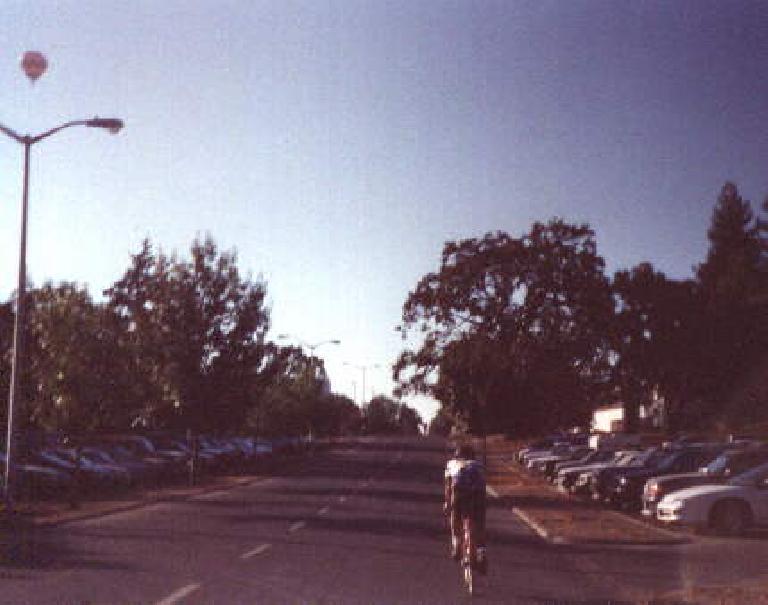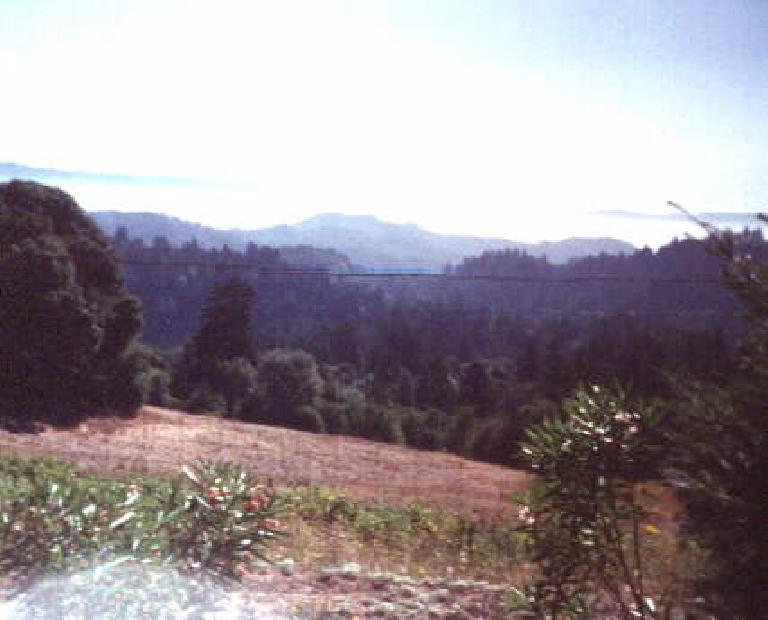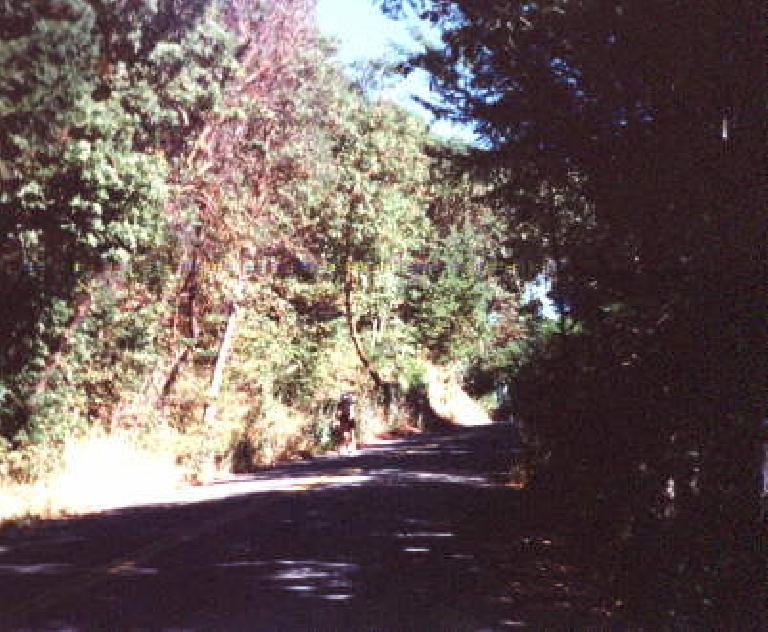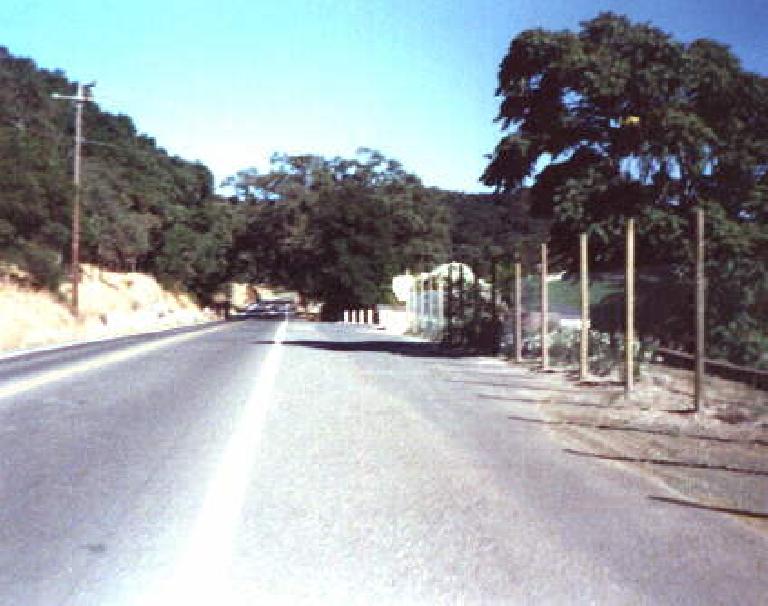Tour de Napa Valley
I finally got to do another century with my cycling partner Ken. Since 1993, when we did the Delta Century in Stockton, Ken and I have made it a tradition to do a 100-miler together every single year. As I will not be able to do the Foxy Fall Classic with him in the fall, it looks like this will be our only ride this year.
What a good way to end the summer. We were up early in the morning, met at his aunt’s home in Belmont where he is staying for the summer, and stopped by some ATM machines before heading to Napa. Many ATMs were malfunctioning this morning. This and other small setbacks made us get to the start of the ride at 8:10 or so, 40 minutes after the mandatory start time period for the 100-mile option had ended.
“No problem,” I told him, “I’m sure they’ll still let us do the 100 miles. After all, the course closes at 5:00, which would give us almost nine hours—and certainly we can do 100 miles in under nine hours.
This had been our attitude for the entire month preceding the ride. We had become complacent, having survived numerous centuries in the past years, be it on a mountain bike (which Ken rode in the 1993 Delta and El Dorado centuries), a road bike with ridiculously high gearing (which Ken rode in the ’94 Eldorado Century), or broken equipment (which affected both of us in the ’95 Gold Rush Century). This ride, with only 5000 feet of climbing, or 30% less than the ’94 Eldorado Century, should be a piece of cake, we thought. Besides, “we can ride a century on any given day,” we agreed.
It’s funny how things don’t always go as planned.
The Start
At the start, the hosts had no problem with us doing the 100-mile option despite starting rather late. Right after I got my route sheet, a remotely familiar fellow walked over to me.
It was Milo, or Mr. Barf King, the person I had ridden with for the first half of the Eastern Sierra Double a month ago. Stunned to see him here, I reached out to shake his hand.
Milo, as chronicled here, was the villain whom I eventually dropped at mile 115 after his repeated self-induced vomiting sessions. On that ride, I left him right after he tried to suggest that he might get killed while riding without lights later in the night if I didn’t stick with him until the very end. So at least it was off of my conscience that he was still alive. I inquired about how things went.
“I made it,” he proudly proclaimed, “I turned on the afterburner and made it to the finish. And the next week I rode the Death Ride in 10 hours, 30 minutes.” A bit incredulous, I congratulated the guy. I definitely underestimated him. But I was very relieved that for this ride he had another ride partner.
He immediately took off. Ken and I, on the other hand, spent some time looking at the route sheet, and left the start 10 minutes later at 8:30 a.m. Still plenty of time to finish the 100 miles, I thought.
The Ride
The First Leg
We started the ride riding along the main highway where the terrain was entirely flat for the first few miles. It was slightly cool outside at this time in the morning, a hint that it would likely get pretty hot in the afternoon. But in the meantime, things were dandy cruising along at about 17-19 mph.
This leg of the ride was entirely uneventful, with the exception of almost missing a few turns. The roads were marked with arrows indicating which way we should turn, but on one of the first turns, the arrows were right in the middle of the intersection. This caused us to overshoot the intersection completely, so we stopped to inspect our maps. At this brief stop, I took a few moments to wet the electrodes of my heart rate monitor.
I used to swear by the instrument until my original Polar heart rate chest transmitter died and I replaced it with a Nashbar one. After that I never was able to get very reliable readings. But the week before this ride I shortened my transmitter strap, hoping to get the transmitter to press against my chest more closely. And by golly, as long as the electrodes are wet, I now could get reliable heart rate readings for the first time in two years. Halleluyah.
More problematic was my Vetta C-20 cyclocomputer. It seems like both sensors were on the fritz, as the week before both the speed and cadence readings were often erroneous. Today the readings were much better, but I still got some erratic readings. It might be time to replace this cyclocomputer with an Avocet.
The 2nd Leg
On this leg of the ride we got another ride partner. Her name was Judy, riding a trick-looking Quintana Roo aluminum triathlon bike. At first she was really quiet, but eventually we (or, primarily, Ken) make a little small talk with her.
She’s a triathlete from Sacramento, doing her first century. Apparently she got off course by 12 miles or so, including a lot of hilly miles. “We’ll try to make sure that doesn’t happen again,” I reassured her.
She was also a bit concerned about the bit of climbing we’d be doing, but Ken told her not to worry because “I haven’t been climbing well today.” I decided to continue to take it easy on the climbs, which is where my heart rate monitor came in handy. I had set it to warn me when my HR exceeded 165 bpm, well under my anaerobic threshold.
Nevertheless, we were still going a pretty decent pace (~17 mph), and constantly seeing the shadow of the cyclist behind me in the corner of my eye, I didn’t alter my rhythm. Finally I realized we had lost a cyclist… and to my surprise, it is not Judy, but rather Ken. Judy has been riding well, mimicking my shifts, drafting pretty closely (after Ken taught her a bit about drafting), and looking lively on the climbs. We slowed down to allow Ken to catch back up.
Ken would later tell me, “On the flats, I would slowly catch up to you guys, but right when I had just about caught up, there would be a hill. And then I would fall back again.” Still, however, this was Ken, and I had no concerns about how he would fare during the rest of the ride. I had more concerns for Judy, who had relatively little experience and has done so many “extra-credit” miles already.
But then, when we finally got to the rest stop after this leg, a guy rode up to Judy, perhaps her boyfriend. They then had a very lengthy but non-heated discussion. Apparently, they had started the ride together, but then Judy got off course. This guy, realizing she was no longer with him, then turned around, rode all over the place in search of her, only to later panic when he heard that one cyclist got hit by a car.
Ken and I finished eating, going to the restroom, and filling our water bottles while they were still talking and had not even grabbed something to eat yet. They finally indicated that they had no intention of continuing the ride, so Ken and I eventually took off. I wonder what they ultimately decided to do.
Miles 50-75
This was the turning point of the ride. It started with a bit of a descent before the climbing picked up. A lot. One hill was four miles going straight up. But at least it was shaded.
Usually I wither in the heat so I made sure that I was drinking plenty of fluids, unlike last year’s Foxy Fall Classic. I felt like I have a huge reserve of energy due to intelligent pacing early on. Today, I saw the benefits of having a heart rate monitor that can accurately assess how hard I am exerting myself.
Not only that, but it was telling me very interesting things about my body. For example, at a rest stop my heart rate while standing still was 128 beats per minute. This was quite alarming because an hour earlier, while slowly climbing a hill with Ken, my heart rate was well under 120 bpm.
When we left the rest stop, my heart rate almost immediately dropped a few bpm, even though I was actually exerting some energy. Ken and I postulated two things: (1) The body increases blood circulation as the ambient temperatures go higher, and (2) it is more tiresome for the body to stand rather than sit. I’m not sure what lessons such info gives us, but human physiology can be fascinating.
Anyhow, back to the hill. I couldn’t help but think about how it reminded me about Old La Honda Road, a classic climb in the mountains west of Palo Alto. The memories came back about how I had to dismount and walk a several times on my first ride up Old La Honda, just a couple of months after arriving at Stanford for the first time. I was a poor climber back then, having grown up in the flatlands of Stockton, CA.
What a difference five years makes. On this ride, even this late in the ride, I was feeling very strong and lively. I was basically just yo-yoing from shade to shade, kicking back with Ken.
Unfortunately, Ken wasn’t feeling so strong. Eventually he urged me to just take off and meet him at the top. “Not yet,” I said, “we still have a few miles to go.” I didn’t want to ditch him as I did with Milo in the Eastern Sierra Double.
A few riders caught and dropped us, however, and my cadence was falling way below acceptable levels, even in my lowest gear. So eventually I did pick up the pace. “I want to see if I can catch up to those other riders,” I said. “I’ll come back down, depending on how I feel when I get to the top.”
He concurred and so I went. I accelerated to about 10-11 mph, which is about three or four times as fast as lower down on the hill. My heart rate went up to about 180 bpm pretty quickly even though I didn’t feel like I was past my anaerobic threshold, probably due to the heat. I maintained this pace and quickly caught up to the others, but then they stopped. Right ahead was the top.
Some female riders were hanging out there, being entertained by a guy who was driving a SAG wagon but stopped long enough to chat with them.
“You were hauling!” he exclaimed.
“I was feeling strong,” I confirmed. It was probably some of my best riding in intense heat. But I had gone through both water bottles within half an hour. Thank goodness, the guy had some water in his car, which he filled up while I chatted with the others. Apparently, one of the cyclists had her birthday today, and hence she and her friends did this ride to celebrate.
I cooled off pretty quickly so after a few minutes I headed back down. Within two minutes or so I saw Ken. “You’re actually very far up the hill,” I told him, “the top is less than a mile away.”
At this point, he was clearly not feeling well. But he still had his sense of humor.
During the climb alone, he decided that he would take a SAG wagon to the next rest stop. I tried to convince him otherwise, having no doubt that he could make it under his own power, but he pointed out how late it was. So we agreed to meet at the next rest stop, with me riding there and he getting picked up by a SAG vehicle once one came around.
After going back up the hill, there was a nice and long downhill. Not wanting Ken to have to wait at the rest stop a long time presuming that the SAG wagon would get him pretty quickly, I was going all out in a full aero tuck, maintaining speeds of 45 mph. What a glorious descent.
On this leg of the ride, I estimated that with 13 miles to the rest stop after the top of the hill, it would take only forty minutes to get to the rest stop, easy. But I missed a turn somewhere. I was lost! I had to turn around and lamented the thought of having to reclimb the hill I had just descended so fast.
But fortunately, even though I had missed a turn, I had returned to the course by complete accident. In fact, my missed turn turned out to be a shortcut, and I got to the rest stop in only 25 minutes.
The Last Rest Stop
At the last rest stop, I was covered from head to toe in sweat. It was as if I had just jumped out of a shower and never bother to dry off. So I munched on food while maintaining my distance from everyone. I was surprised Ken wasn’t already there, but figured he would be coming in very shortly.
But 30 minutes passed, then 40, then 50. The rest stop was closing up and the last riders were leaving. During these minutes I had anxiously inquired to one of the hosts with a radio (a teenager familiar with HAM lingo) if “anyone had seen or picked up a guy in a UC Davis cycling jersey.” The kid took a while to ask the drivers and reply, “No, there’s no one on the course anymore.”
No one on the course? Had someone picked Ken up already and was driving to the finish? Or had something happened to him?
When it became an hour after I first got to this rest stop, I urged the teenager once more to check with the drivers. “Wait… there is one more rider on the course.”
I pressed for a name, or at least a description of the rider. Again, the kid took forever to request the info. He couldn’t get a name but confirmed it is a rider “in a Cal Aggies jersey.”
Thirty seconds later, a van came with Ken in it. Hooray! “They picked me up literally one mile from the rest stop,” Ken said. “It could have taken me less time to ride in that than to load my bike on the van,” he observed.
With it being almost 5:00 p.m.—when the course and “lunch” ultimately was supposed to close—he decided he would sag in to the finish. I had cooled off tremendously by now but I still wanted to finish the ride. Time trial mode.
The Final 12 miles
The final 12 miles started with a downhill but had a heinous headwind. First I started at more than 20 mph, but couldn’t maintain it; the wind was too strong. After 10 minutes, the van with Ken and his bike passed.
Speeding by a few riders, I told them, “Hang in there… we’re almost there.” But I was starting to hurt in this headwind; my legs weren’t nearly as loose as one hour ago. My speed had dropped to 16-17mph.
Finally, Yountville was in sight. I finished at 5:30 p.m. Thankfully, there was still some food out. Ravenous, I took as much pasta and chicken as I could. Bees were everywhere, however, and I ultimately gave up on finishing the food.
But the bees couldn’t spoil what was a good day: a pretty ride with a good friend, and with no mechanical problems. Moreover, I felt especially strong until the last 10 miles or so. It was a fitting end to a great season of cycling.
Ride Data
- 98 mi.
- 8:20 start, 17:30 finish—9.2 hours
- Average Speed: 13.5 mph moving, 8.75 mph overall
- Max Speed: 44.5
- Total Climbing: 5000 ft.
Rating
- Scenery:4
- Support/Organization: 2-. It took 1.5 hours for a SAG wagon to come and get my riding partner in need of help.
- Food: 3-. Would have got a 1 were it not for some of the best pasta I’ve ever tasted.
- Weather: 3. Started out beautiful, but then it got up to 97 degrees.
- Relative Difficulty: 3
- Overall Rating: 3. Generally a nice course but could have used more support and better route markings on the road.




